King Arthur, Excalibur, and an Italian Saint
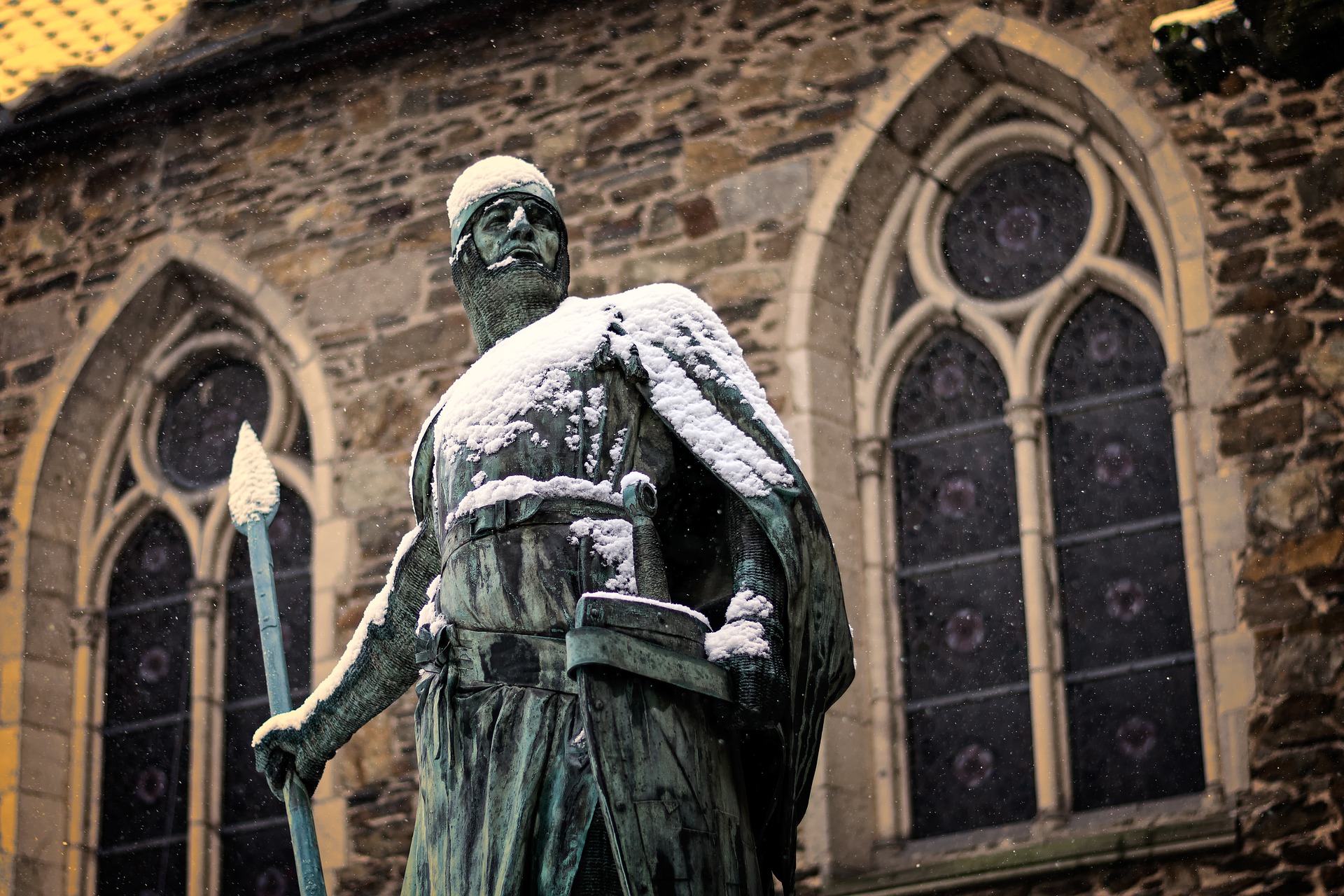
One night in the year 1180 in a little town outside Siena, a knight by the name of Galgano Guidotti had a dream in which the mighty Archangel Michael came to visit him.
“Now see here Galgano,” Michael said. “You’re a pretty well-to-do fella but you’ve got a bad reputation. You’re quick-tempered, brutal, and very, very worldly. You may think you have it all, but in the spiritual world — well let’s just say you’re headed to a place where all the suntan lotion in the world won’t stop you from getting burnt. Today’s your lucky day, however, cause I’m gonna show you the path to God.”
Well, Galgano was a pretty fearless knight, and he wasn’t going to be intimidated by some guy claiming to be St. Michael. So he followed until they came upon a circular church near a place called Monte Siepi. Not only was the church unique in its shape, but it had another special feature. All twelve apostles were standing outside waiting to greet Galgano and give him advice as to what to do and where to go.
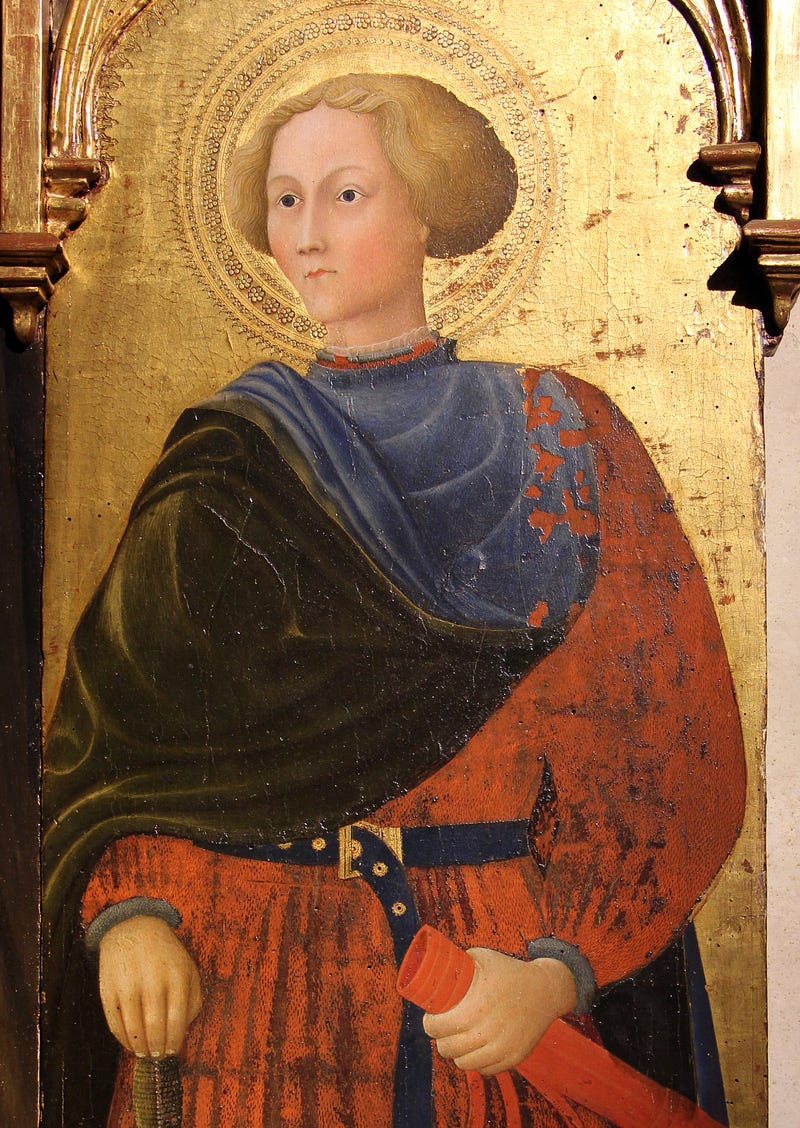
Don’t Even Try to Ignore God
When Galgano woke up, he was unimpressed by his supernatural visitors. It was very nice, very sweet, but he had more important matters to attend to. Like wooing that dark-eyed beauty in the town next door.
God, however, wasn’t in the habit of letting people ignore him. When Galgano went riding off to meet his fair lady his horse reared, throwing him to the ground in St. Paul like fashion. Something invisible then lifted him to his feet. He followed as a beautiful voice guided him once again up the rugged hillside to Monte Siepi. Once again he saw the church once again the apostles stood outside of it. Now however they were joined by Jesus and his mother.
“You gotta change your evil ways, baby,” they said.
This time Galgano was impressed. “It sounds good . . . in theory. But look at me, I’m a rich and handsome guy. I’ve got prospects.”
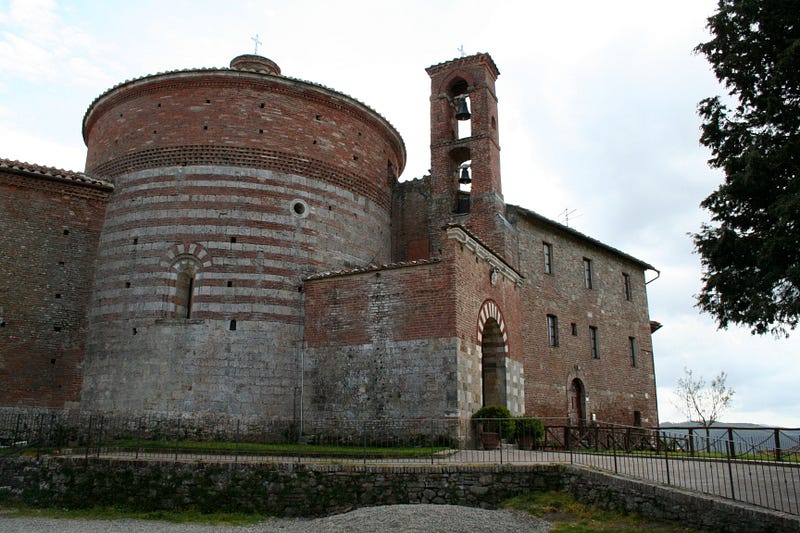
When God Stares People Listen
He paced back and forth along the hillside glancing now and then at Jesus and the blessed mother. They said nothing, but just the look on their faces was enough to make him feel bad. Finally, he stopped near a large boulder. Boy, it was hard to stand firm with those eyes on him like that.
“What you’re asking of me is impossible,” he said in frustration. “Why, it would be easier for me to thrust my sword into this stone than it would be to renounce my worldly life.” And to prove the difficulty he thrust his sword toward the rock.
Now Galgano was hoping for a nice visual aide to back up his words, but something went wrong. Instead of the sword bouncing off in an effective demonstration of the impossibility of the task, it miraculously penetrated the rock.
Galgano gasped — “How can it be — that rock yielded like butter!”
“Like butter,” echoed St Michael who had been filing his nails the whole time. By this point in his career, he wasn’t much surprised by things like this.
Of course, Galgano had a complete change of heart. He never left the hill. Instead, he stayed at Monte Siepi living a holy life as a hermit until he died about a year later.
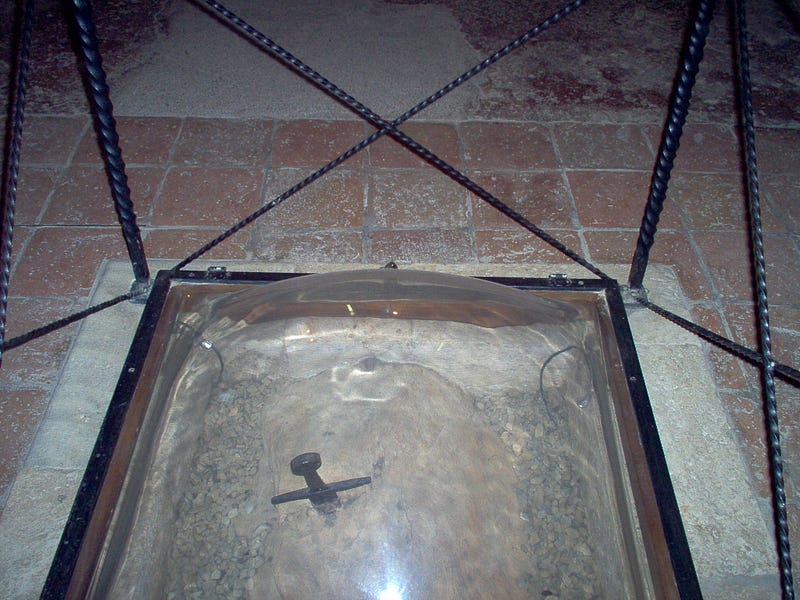
But it Doesn’t End There
It’s a good story, isn’t it? And you might think that’s all it is. Except for one little thing.
The sword is still in the stone.
You know there’s always a doubting Thomas or two in the crowd, and it’s been no different for the supposed sword of St. Galgano. Science can never prove religion, but sometimes it backs it up. In 2001 a team of researchers from the University of Pavia decided to investigate the origins of the sword. The results of their testing agreed with the legend. The style and composition of the sword are consistent with what typically would have been used in Galgano’s time.
In the chapel where the sword is located there’s also a pair of mummified hands. According to tradition, they belonged to a would-be assassin. These were dated to the 12th century as well. Curiously legend also claims anyone who tried to steal the sword would have their arms ripped off. Yet another good reason not to mess with God. You’d have a hard time trying to steal it today, however. In 1924 they cemented the sword with lead — to avoid any other hands being separated from their bodies.
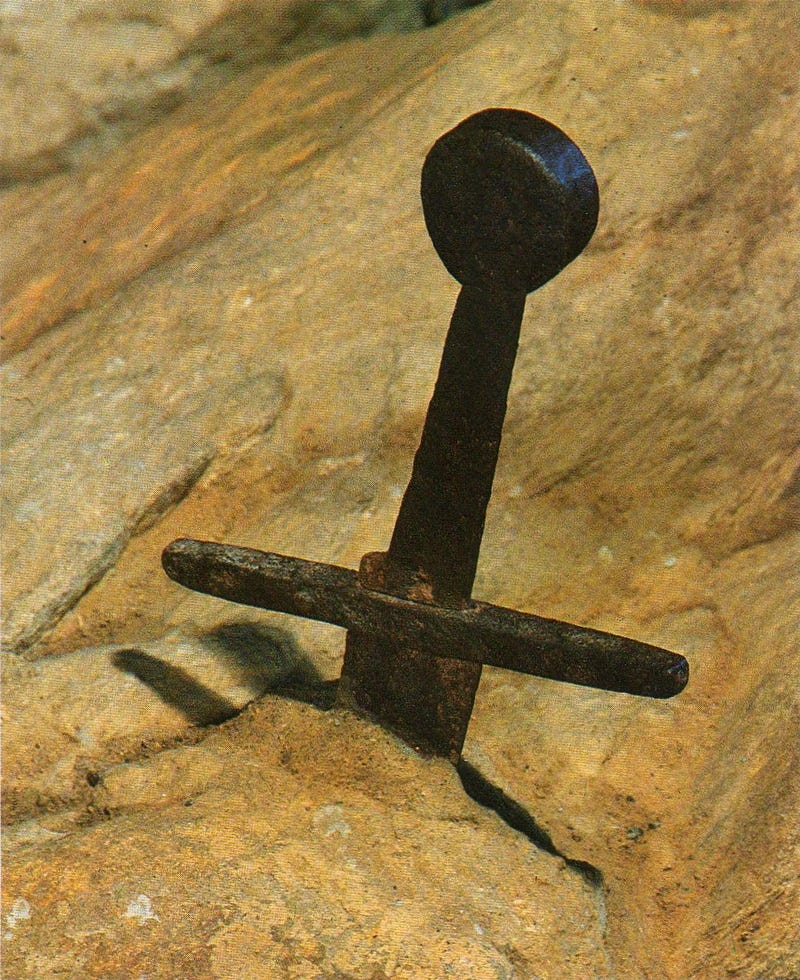
The Sword, still in the Abbey of St. Galgano
A Sword? In a Stone?
Kinda sounds familiar, doesn’t it? Maybe a bit like King Arthur and that famous sword Excalibur? Some people say the story of Saint Galgano was well known in Britain and was possibly the inspiration for the Arthur legend. A round church becoming a round table, a sword becoming a call to kingship instead of religion — it certainly has possibilities.
Geoffrey of Monmouth was the first to write about the life of King Arthur in the early 12th century. Although he is said to have gotten the idea of the sword from Welsh tradition. In his version of the story, the sword is named Caliburn, a derivative of the Welsh Caledfwlch. It wasn’t until 1200 that the sword was actually placed in a stone. It was Robert de Boron, a Burgundian poet who got the idea. Thomas Malory’s 15th-century rendition of the story was the one that really became famous, however. Malory adjusted the name to Excalibur which he said meant cut-steel.
So was Excalibur really the sword of Galgano Guidotti? We’ll probably never know. One thing we do know however is this: God always gets his man and he’ll do some pretty awesome things to make it happen.
Wanna know more about Arthur or Excalibur, or swords in general, let me know in the comments. Y’all behave and I’ll write about it.
Notes and Sources:
All images Wikimedia Commons
http://www.bbc.co.uk/wales/history/sites/themes/society/arthur_geoffrey_of_monmouth.shtml
https://www.history.com/news/was-king-arthur-a-real-person
Related Posts
The Man Who Rebuilt King Arthur’s Castle
It’s May of the year 1233 and Richard, Earl of Cornwall, younger brother of…
February 20, 2020


Leave A Comment